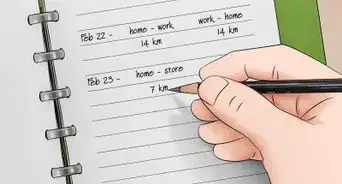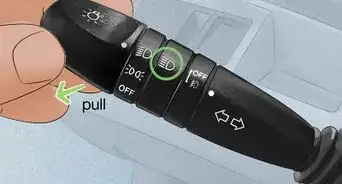This article was co-authored by wikiHow Staff. Our trained team of editors and researchers validate articles for accuracy and comprehensiveness. wikiHow's Content Management Team carefully monitors the work from our editorial staff to ensure that each article is backed by trusted research and meets our high quality standards.
This article has been viewed 79,602 times.
Learn more...
Fuel efficiency is a pretty important feature of cars these days. This means it's also pretty important to know how to measure it. Fortunately, it's pretty easy for almost anyone to keep track of their fuel use. All you need is a spreadsheet for tracking mileage driven and fuel purchased. Then, divide your mileage by your fuel use to get your car's miles per gallon measurement.
Steps
Creating and Using a Spreadsheet
-
1Open a spreadsheet with 5 vertical columns for data entry. You can opt to either make this spreadsheet in a small notepad or on a computer platform. The digital version will be easier for reading and making calculations, while the notepad version is best for tracking fuel usage on the road.[1]
- This is because you can place the notepad in your glove compartment with a pen and make notes to it from the front seat of your car. The digital spreadsheet can only be edited when you have access to your computer.
- Microsoft Excel is probably your best bet for making an easy-to-use spreadsheet for tracking fuel use.
-
2Set aside the first 4 columns for date, odometer, mileage, and gallons. Label the tops of the first 4 columns “Date,” “Odometer Reading,” “Mileage,” and “Gallons Purchased.” If you live in a country that uses the metric system, simply replace “Gallons Purchased” with “Litres Purchased.”[2]
- Although putting the columns in this order isn't strictly necessary, this is the most intuitive layout for this type of spreadsheet.
- These first 4 columns will be comprised of information you'll take from your receipts whenever you fill up your car.
Advertisement -
3Make the 5th column the “Miles per Gallon” column. This will be a calculated column that you'll create by dividing the information in the “Mileage” column by the info in the “Gallons Purchased” column. This column will be the most important for determining the fuel efficiency of your car.[3]
- If you're using the metric system, this column should be labeled “Kilometers per Litre.”
-
4Keep your receipt and note the odometer reading when you get gas. Your receipt contains nearly all of the information that will go into your spreadsheet, so make sure to keep it safe. Write the mileage from your odometer onto the receipt to keep all this information together.[4]
- Make sure that the receipt includes the number of gallons you purchased from the gas station.
Tip: If the pump didn't automatically give you a receipt, head inside the gas station and ask the attendant for one.
-
5Reset the trip meter before you leave the gas station, if you have one. Many cars have a trip meter next to the odometer that keeps track of how many miles you've traveled in a given trip. Reset your car's trip meter to 0 before you leave the station so you can easily determine how many miles you've gone in between fill-ups the next time you get gas.[5]
- If you don't have a trip meter, you'll still be able to calculate mileage with the information on your odometer.
-
6Input the data from your receipt into your spreadsheet. Mark the date in the first column, the reading from your odometer in the second column, the mileage driven since your last fill-up in the third column, and the amount of fuel you put in your car in the fourth column. If you don't have a trip meter, you can calculate your mileage by subtracting the odometer reading from your last fill-up from the current odometer reading.[6]
- For example, if the odometer read “34,120” when you last filled up your car and now reads “34,230,” then you can determine your mileage with the following equation: 34230-34120=110.
-
7Divide the miles driven by gallons purchased to get your car's MPG. Take the number from the “Mileage” column and divide it by the “Gallons Purchased” to determine your car's miles per gallon measurement. A higher MPG means that your car is more fuel efficient.[7]
-
8Repeat this process whenever you get gas to track your fuel use. By keeping track of how often you buy gas, how much you buy, how much you drive in between fill-ups, and so on, you will have a firm grasp of how much fuel you're using over time. What's more, once you have all this information laid out, it'll be much easier for you to figure out how to use less fuel overall.[8]
Using Alternative Methods
-
1Use an app to keep track of your mileage if you have a smartphone. There are a number of free and paid smartphone apps that use GPS technology to track your mileage for you. This is a very easy way to track your mileage in between fill-ups if you normally take your phone with you when you drive.[9]
- Mileage Expense Log is the most popular app for the iPhone, while MileIQ and TripLog are the most popular apps for Android phones.
-
2Sign up for a fuel-tracking website. There are several websites out there that provide you with handy software for tracking your car's fuel use. All you have to do is register an account on the site, input your car's information, and provide the relevant information after each fill-up.[10]
- The relevant information includes things like how much fuel you purchased and what your odometer reading at the time was.
- The most popular website for tracking fuel use is Fuelly.
Tip: Given the number of free mobile apps and websites out there for tracking fuel use, it's probably not worth it to pay to sign up for any website.
-
3Keep a notebook in your car to track your fuel use by hand. Use this notebook to write down how much fuel you purchase at each fill-up, along with any other information you want to keep track of. Make sure to keep a pen or pencil in your car as well, so you'll always have something to write in the notebook with.[11]
- For best results, go with a notebook that's small enough to fit in the glove compartment, underneath the driver's seat, or in the side pocket of the car door.
-
4Make a habit of keeping your receipts after pumping gas. Put your receipts in your wallet, purse, glove compartment, or somewhere else you won't lose them. Doing this will give you a handy “paper trail” you can use to track your fuel use if you're not using any other tracking method.[12]
Community Q&A
-
QuestionHow can I prevent fuel theft?
 Community AnswerFirst, get a locking gas cap for your vehicle. Look up your vehicle's tank capacity in the back of your owner's manual. Next time you fill up, make a note of your mileage, and make another one when the tank is low. Compare this with what the manufacturer states you should be getting for the type of driving you're doing (highway, town, etc.). If this differs a lot, there may be an issue with a leak or possible theft.
Community AnswerFirst, get a locking gas cap for your vehicle. Look up your vehicle's tank capacity in the back of your owner's manual. Next time you fill up, make a note of your mileage, and make another one when the tank is low. Compare this with what the manufacturer states you should be getting for the type of driving you're doing (highway, town, etc.). If this differs a lot, there may be an issue with a leak or possible theft.
References
- ↑ https://www.edmunds.com/fuel-economy/how-to-keep-gas-mileage-records.html
- ↑ https://www.edmunds.com/fuel-economy/how-to-keep-gas-mileage-records.html
- ↑ https://www.edmunds.com/fuel-economy/how-to-keep-gas-mileage-records.html
- ↑ https://www.pumptalk.ca/2012/05/tracking-your-fuel-consumption.html
- ↑ https://www.autocarindia.com/auto-features/calculate-your-cars-fuel-efficiency-correctly-406097
- ↑ https://www.autocarindia.com/auto-features/calculate-your-cars-fuel-efficiency-correctly-406097
- ↑ https://www.autocarindia.com/auto-features/calculate-your-cars-fuel-efficiency-correctly-406097
- ↑ https://www.edmunds.com/fuel-economy/how-to-keep-gas-mileage-records.html
- ↑ https://www.cnet.com/how-to/3-apps-for-tracking-your-mileage/

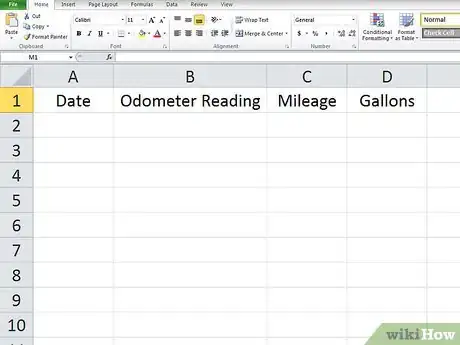


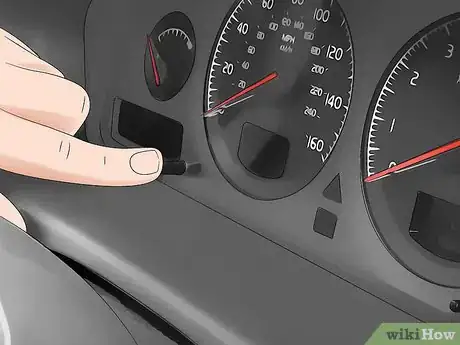





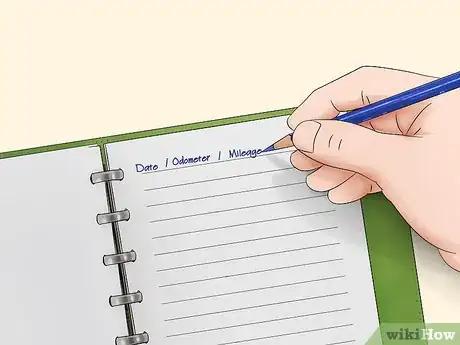
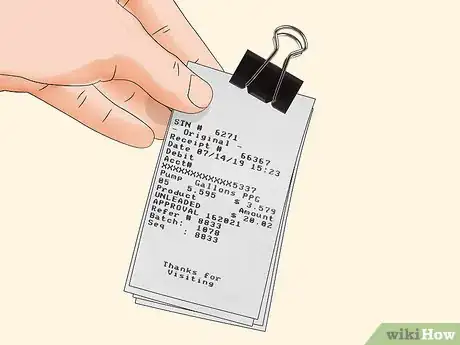


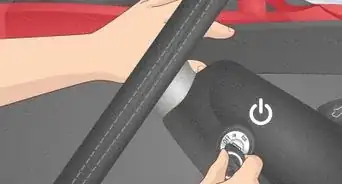


-Step-9-Version-2.webp)




